Dogs are considered the first friends of man since primitive times. There are cave paintings of these animals next to people made during the Mesolithic. Many of the oldest breeds ceased to exist over time, acquiring new features in the process of evolution. But in the open spaces of the Far North, a representative of one of the most ancient dog breeds lives next to a person. This is a Nenets like or reindeer spitz. A faithful friend, a reliable guard, a responsible shepherd, and a good hunter - these are the four advantages of a four-man helper living among endless snows.
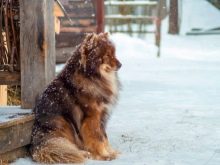
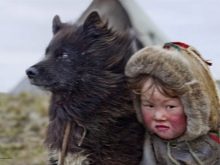
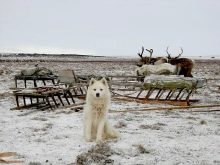
History of occurrence
The history of the Nenets husky begins during the Upper Paleolithic. The ancestor of the breed is an ancient peat dog, from which all types of European Spitz originated. Due to the fact that the northern peoples lived for a long time in isolation, the Nenets husky was able to maintain the purity of blood, and the breed has not undergone significant changes since ancient times. There are two versions of the appearance of the breed. According to one of them, the reindeer herding Spitz is the indigenous representative of the animal world, which still served the primitive inhabitants of the Arctic lands. There is no particular evidence for this theory.
According to another, the Scandinavians brought the descendants of the peat dog to the Yamal Peninsula from Europe, who moved there for permanent residence. Already from them the deer husk got to the Sami. At the beginning of the XIX century, the Lapps came to the Kola Peninsula, where they met with the Nenets, grazing their herds there without four-legged helpers. Then from the Lapps the Nenets got the first representatives of the Nenets like breed.
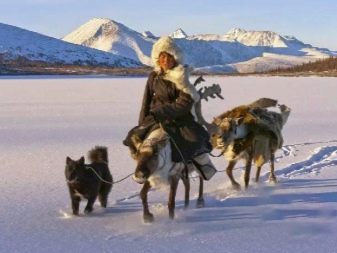

Before meeting with the Nenets, the reindeer herding Spitz was used as a hunting dog. But thanks to a long life next to people in difficult conditions, representatives of the oldest native breed acquired such important features:
- strong and adaptive psyche;
- light constitution;
- good hunting skills.
Such skills allowed the dog to become an excellent shepherd for large deer herds, without which the life of a native of the northern lands is unthinkable. Interesting facts revealed studies conducted by the Institute of North Development Problems of the SB RAS. Since the Nenets acquired their reindeer herding husky, dogs have become an integral part of the farm for any reindeer herder. “Without dogs, a man is not a man, a shepherd is not a shepherd,” say the native Nenets, emphasizing their dependence on a faithful helper. Noting a good owner, they mention not only the number of deer in the herds, but also how many good working dogs he has. Until recently, a well-trained shepherd dog was equated with a deer at a price.
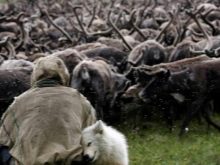
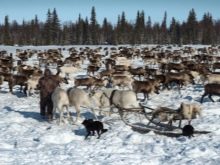
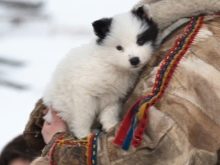
Nenets call their huskies “veniku”, adding definitions for age and gender:
- hani-viniku - puppy up to a year old;
- choir-viniku - adult male;
- echa-viniku is a female.
In some areas of the north, residents also produce short-haired huskies, calling them “yando”. This term designates a cross between the Nenets and Russian European huskies. The common name for shepherd’s huskies among the Nenets is “Neney-Veniku” (Nenets dog), all other breeds of the indigenous inhabitants of the northern regions are called “Lusa-Veniku” (Russian dog).
The Nenets shepherd dog, the reindeer herding Spitz or the Nenets reindeer herding received official recognition in the last decade of the last century only in the Russian Federation. In the International Cynological Federation, such a breed does not exist.

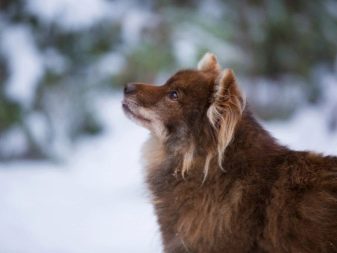
Breed characteristics
Today, reindeer herding dogs of Juraki are known all over the world thanks to the artificially bred decorative breed of Samoyed huskies. The breed was based on white representatives of Nenets dogs, distinguished by their dense physique, fox head shape, thick fluffy hair and developed intelligence. Unlike Samoyeds, the Nenets husky has no color restrictions, except for the tiger, which is outside the breed and is not recommended for breeding. According to established standards, a purebred specimen is characterized by a description containing the following features.
- A wedge-shaped muzzle expanding from the nose smoothly passes into a clearly defined forehead, which flows into a clear occipital protuberance. Strong jaws hide large white teeth behind dry, tightly closed lips. The color of the nose is mostly black, but in light individuals it can be brown.
- Widely spaced erect small ears are high and have great mobility. The tips of the ears are directed slightly forward and upward.
- Small eyes with a clever expressive look are almond-shaped and slightly slanted towards the bridge of the nose. Depending on the suit, the iris is yellow in brown dogs of various shades and brown in others. Hollow or bulging eyes are among the imperfections of the breed.
- A muscular, dry neck of medium length set at an angle of 45-50 ° passes into a pronounced withers, especially noticeable in males.
- A strong short back, smoothly turning into a straight and slightly convex lower back, flows into a wide straight or slightly lowered croup.
- A deep, moderately wide oval-shaped chest passes into a lean stomach, hidden by long hair.
- A relatively long tail in a calm state is curled upward, but in a state of excitement takes the form of a lowered log or sickle.
- Legs are straight parallel, hind legs apart slightly wider than forelegs. The legs are equal in length or slightly longer than half the height of the dog at the withers. Paws are oval with slightly bent fingers and strong claws. Profitable fingers required for the Nenets husky need to be removed, but the original owners of the breed consider this defect a hallmark of a fast and good dog.
- Straight, elongated coarse coat is rich in soft thick undercoat. The adult dog has a thick collar, rich pants and long hair on the underside of the tail, where it can reach a length of 250 mm.
- The anatomical differences between male and female are pronounced. Height in males varies from 44 to 52 cm, while females grow from 40 to 45 cm. Males are more square in shape and more massive than females. Their coat is significantly rich even in the summer.
- Dog movements are easy. A characteristic gait for a reindeer herding spitz is a gallop and an accelerated lynx.

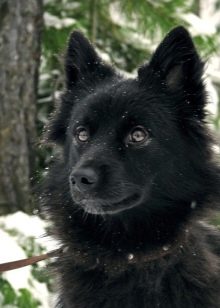
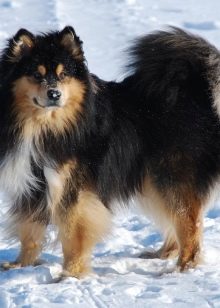
Nature and behavior
One of the most ancient native breeds, preserved to our times, is characterized by a balanced character. Because of the way of life next to a person, evil, naughty individuals were destroyed without leaving offspring. Therefore, a modern dog has good adaptability and good naturedness in relation to the owner and his family, considering them to be his pack, which must be protected.
Energetic and friendly, the dog responds easily to the emotional state of a person. It is highly sensitive, becoming unobtrusive and inconspicuous when it understands that at the moment it is not up to her.
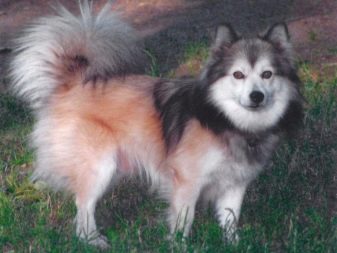
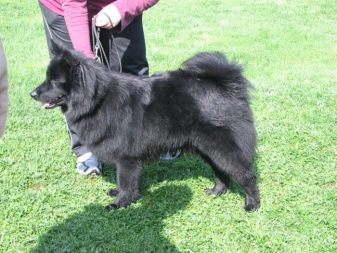
All owners of reindeer herding husky note the mind of the dog and his ability to make independent decisions, even in unusual situations. The dog clearly understands the permitted limits of its capabilities, often acting on an intuitive level and focusing on the previous actions of the owner. Laika is very patient with young children, allowing her to fiddle with her hair and not display aggression even when the baby hurts her. But unfamiliar adults are wary and may show a negative reaction if they try to stroke it.
From a reindeer herding spitz, a good security guard was created who will reliably protect the household property from any violatorsbe it a person or another animal. The famous Soviet zoologist and naturalist Spangenberg describes such an incident in the life of her husky when she not only drove a domestic cat away from a bowl with open oil, but also tried to wrap this piece of paper in the paper on which it lay, which is a rather difficult task for a dog. But she did, although no one taught her such tricks.
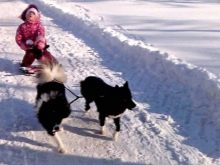
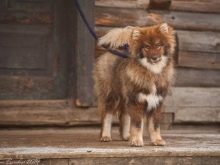
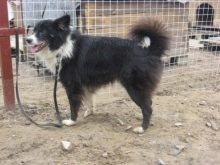
Content
A dog is best suited for free keeping in a private house, where it has the ability to move a lot, but dogs of this breed are not suitable for apartments. In the natural environment, the dog independently manages personal hygiene, since the Nenets have never looked after the appearance of the dogs. But when keeping the dog in an apartment, she needs regular combing, especially during molting. You can bathe the reindeer race once a year or do without this procedure. If necessary, the dog can trim its nails, clean its ears and wipe its eyes.
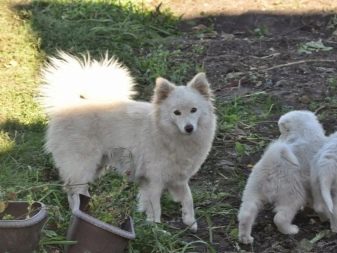
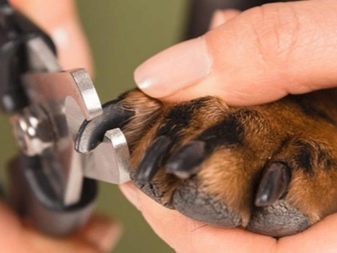
Like, the food is not picky. Among the Nenets, she plays the role of an orderly, eating everything that remains after cutting the carcass of a deer, as well as leftovers from the master's table. In urban conditions, the dog can be fed meat, fish, offal. Also included in the menu are cereals, vegetables, and vitamin supplements. Like any dog, do not give Spitz sweets, savory spices and fried or smoked foods.
If you don’t want to create a menu for the dog yourself, then you can use the ready-made premium foods recommended for dogs with thick hair.
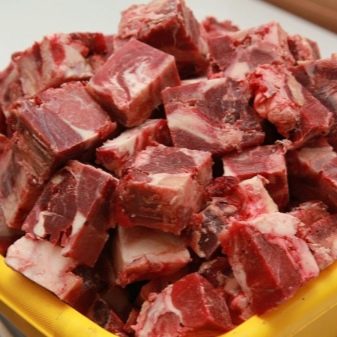
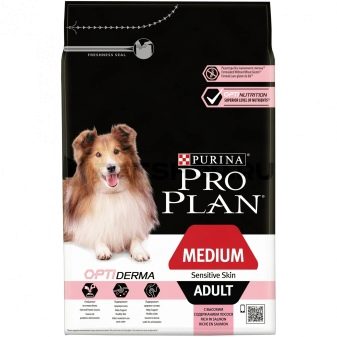
Parenting and training
Raising a reindeer herding spitz is very easy. A smart and quick-witted dog quickly realizes what the owner requires of it and happily fulfills all the requirements. For training a puppy, it is not recommended to use harsh methods, since a smart dog grabs everything that is called on the fly.
Often in training the younger generation use adult trained dogs that pass on their experience to a young individual.
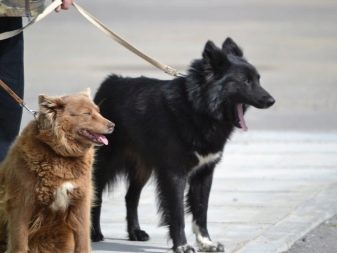
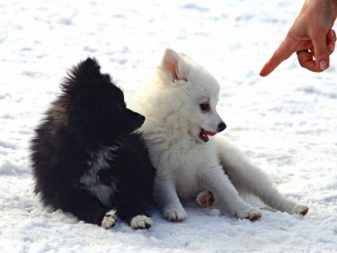
Training begins when the puppy reaches the age of about a year.In the process of training, they use the “carrot”, but sometimes you have to punish the dog. After punishment, the dog is tied, as he may be offended and run away. But the dog does not make a repeated mistake. Teaches huskies in accordance with the profession where it will be used. For Nenets, the duties of a shepherd dog are divided into the following roles:
- you are malambada - those who collect deer in a herd;
- you-tavans control the movement of the herd, making independent decisions about the speed and time of movement;
- malta-myta return stray reindeer at the direction of the shepherd or focusing on their scent;
- Mercho-wash organize a circular movement of the deer herd, preventing them from wandering.
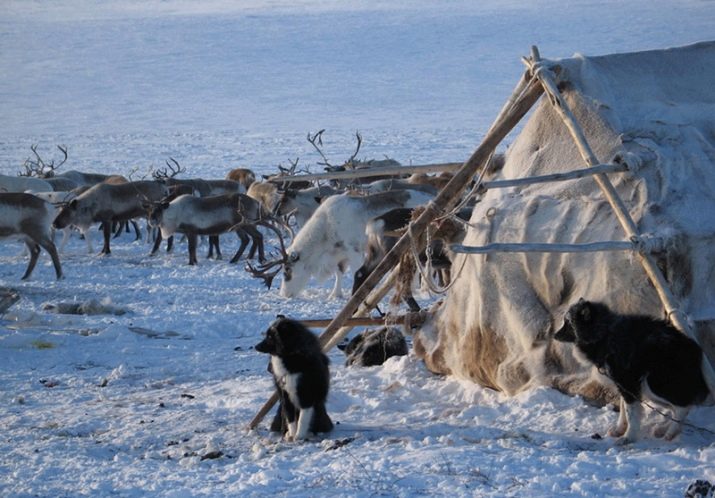
Mostly shepherd dogs are appreciated, but hunting dogs are not approved by the Nenets, as is the use of deer racers as sled dogs. Like has shown itself as a companion dog. Indigenous people in the north know that a reindeer herding dog will help him find his way home to the blizzard, lead him away to the bear, or bring a dead bird.
Although reindeer herders do not believe that hunting instincts are needed by Nenets huskies, in other regions smart and balanced dogs are often used precisely as assistants in hunting. Clever dogs quickly understand what kind of animal the owner is interested in, and help to find and track even on trees or in wetlands. In this case, the dog does not bark in vain and is not distracted by the environment. Forensic investigators use reindeer herding to search for illegal substances. The Nenets dog also found its application in the service of the Ministry of Emergencies, where it is trained to find people in distress.
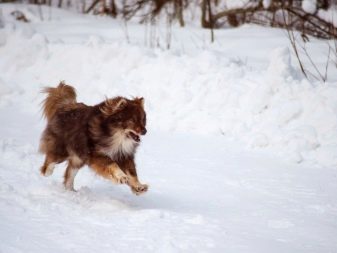
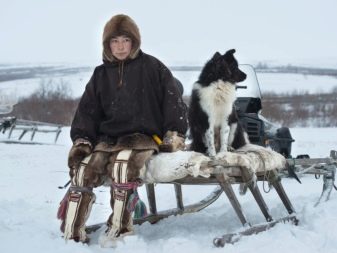
See more about the features of the dog breed Nenets like in the next video.




































